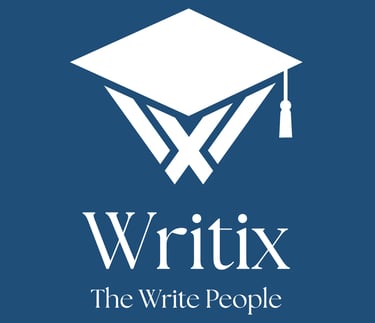How to Create Clear and Compliant Clinical Documentation That Meets Global Standards
Ensure your clinical documentation meets global standards. Discover expert tips, writing strategies, and how our technical writers support compliance.
TECHNICAL WRITING SERVICES
Dr. Kumkum
7/20/20253 min read


In the highly regulated world of healthcare, biotech, and pharmaceuticals, clear and compliant clinical documentation isn’t just a best practice, it’s a necessity. Regulatory bodies like the FDA (USA), EMA (Europe), and MHRA (UK) demand precise, consistent, and transparent reporting of clinical data. But for many healthcare innovators, scientists, or R&D leaders, transforming complex trial data into readable, regulation-ready documentation can feel overwhelming. That’s where technical writing becomes mission-critical.
At Writix, we specialize in technical writing services designed for healthcare and biotech industries. Whether you’re preparing Clinical Study Reports (CSRs), Investigator Brochures (IBs), or Standard Operating Procedures (SOPs), this guide will show you how to write clearly, stay compliant, and accelerate your journey from research to regulatory approval.
Why Clear Clinical Documentation Matters
Clinical documentation is more than paperwork. It ensures:
Patient safety and transparency
Regulatory compliance
Accelerated approvals
Efficient audits and inspections
Credibility with investors and stakeholders
Poor documentation can lead to serious issues: delays in drug/device approval, legal complications, and rejection from ethics committees or regulatory authorities.
Related: Explore our healthcare technical writing services
1. Understand the Core Documents Required
Depending on your stage of research and the regulatory body involved, common clinical documents include:
Clinical Study Protocols (CSP)
Investigator Brochures (IBs)
Informed Consent Forms (ICFs)
Clinical Study Reports (CSR)
Case Report Forms (CRFs)
SOPs and training manuals
Risk Management Plans (RMPs)
Regulatory Submissions: INDs, NDAs, MAAs
Each of these documents serves a unique role, but all must be:
Scientifically sound
Grammatically accurate
Terminologically consistent
Aligned with ICH-GCP guidelines
For full lifecycle support, Writix provides regulatory writing services tailored to global healthcare standards.
2. Structure Your Clinical Document Strategically
While formats vary, clarity and consistency are universal. A typical structure includes:
Title Page (document title, version, date)
Table of Contents (auto-generated for easy navigation)
Executive Summary (for stakeholders)
Methodology/Design Section (study type, endpoints, criteria)
Results Section (with statistical analyses)
Discussion/Conclusion (implications and context)
Annexes (figures, raw data, references)
Following this structure helps non-technical readers, reviewers, and regulators quickly understand your work.
3. Follow International Standards and Guidelines
Compliance means aligning your documentation with recognized frameworks:
ICH-GCP E6 (R2) for good clinical practices
CONSORT for randomized trials
SPIRIT for protocol writing
CDISC for data reporting
EMA/FDA templates for regulatory consistency
At Writix, our writers are trained in these standards to ensure your submissions pass the first round of reviews.
4. Simplify Complex Data Without Losing Accuracy
Scientific accuracy doesn’t mean unreadable jargon. Your technical writer should:
Use consistent terminology (especially for drug names, acronyms, procedures)
Create reader-friendly tables and graphs
Avoid passive voice and redundancies
Explain abbreviations and technical terms on first use
A well-crafted document should be accessible to regulators, reviewers, and stakeholders who may not share your scientific background.
Need support with medical data interpretation? Try our clinical content editing service.
5. Include Metadata, Version Control & Audit Trails
Documentation without traceability is a red flag. Ensure every file includes:
Document history/version tracking
Author/reviewer names
Date of creation/revision
Approval status and signatures (digital or manual)
This isn’t just good practice; it’s required during FDA/EMA inspections.
6. Collaborate with SMEs and QA Teams Early
Technical writing isn’t a solo act. Writers must work closely with:
Subject Matter Experts (SMEs)
Clinical research coordinators
Quality Assurance (QA) teams
Regulatory affairs professionals
Writix integrates seamlessly into your existing teams—providing structured documentation that reflects real research while meeting compliance standards.
7. Review, Edit, and Proofread Thoroughly
Even minor errors can delay approvals. Always:
Review for scientific accuracy
Ensure formatting matches submission standards
Check citations and bibliography
Eliminate grammar/style inconsistencies
Our proofreading and editing services provide a final polish before submission.
Getting It Right, First Time
In biotech and healthcare, poor documentation isn’t just inefficient, it’s risky. Whether you’re preparing a new drug application or refining SOPs for a clinical trial, clear, compliant, and audience-ready documentation is non-negotiable.
Writix is here to help you get it right the first time. Our experienced medical and scientific writers know what regulators expect and how to deliver it with accuracy and clarity. If you're looking to streamline your documentation process or need a full-service technical writing partner, talk to us today.
Address: Writix, Level - 5, The Iconic Corenthum, Tower- C, A-41, Sector 62, Noida, Uttar Pradesh 201301
Phone : +91 9289469111
2025 Thewritix. All Rights Reserved.
Blogs
Social
Research Consultation Services
Journal Publishing Assistance


We Accept

Add On Services
Who we are?
Our Team
